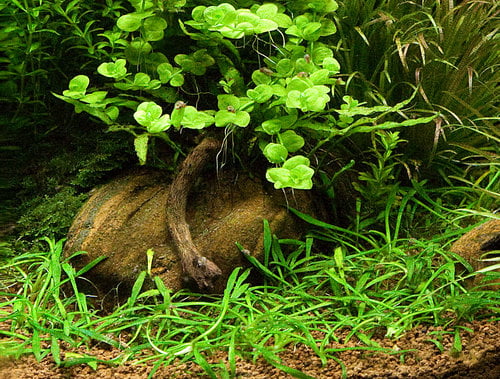Discover the allure of Malaysian driftwood and how it can enhance the aesthetics of your aquarium.
Benefits of Malaysian Driftwood in Aquariums
Malaysian driftwood offers numerous benefits when used in aquariums. Firstly, its unique shape and texture create a natural and captivating environment for your aquatic pets. The intricate branches and roots provide hiding spots and resting places, mimicking the natural habitats of fish and other aquatic creatures.
Additionally, Malaysian driftwood releases tannins into the water, which can help create a natural-looking and healthy environment for your aquarium inhabitants. These tannins can also provide some antifungal and antibacterial properties, promoting the overall well-being of your aquatic pets.
Furthermore, Malaysian driftwood is known for its durability and longevity. It is a dense and heavy wood that can withstand the constant exposure to water without rotting or deteriorating easily. This makes it a great investment for long-term use in your aquarium.
Overall, the benefits of using Malaysian driftwood in aquariums are clear. It adds beauty, complexity, and functionality to your aquatic environment, making it a wise choice for any aquarium enthusiast.
Types of Malaysian Driftwood
Malaysian driftwood comes in various shapes, sizes, and forms, allowing you to choose the perfect piece for your aquarium. Some common types of Malaysian driftwood include:
1. Root Driftwood: These driftwood pieces resemble tangled roots, creating a natural and organic look in your aquarium. They often have multiple branches and intricate details, providing ample hiding spaces for your aquatic pets.
2. Branch Driftwood: As the name suggests, branch driftwood features long, twisted branches that can be arranged in various ways to create a unique and visually appealing aquascape. The branches can serve as perches for fish or as anchors for aquatic plants.
3. Stump Driftwood: Stump driftwood resembles the base of a tree trunk and is often used to create a focal point in an aquarium. Its solid and sturdy structure makes it an ideal choice for larger aquariums.
4. Driftwood with Cavities: Some Malaysian driftwood pieces have natural cavities or hollow spaces, which can be used as breeding grounds for fish or as hiding spots for shy aquatic creatures.
When choosing Malaysian driftwood for your aquarium, consider the size and dimensions of your tank, as well as the specific needs of your aquatic pets. It's also important to properly clean and prepare the driftwood before adding it to your aquarium.
Preparing Malaysian Driftwood for Aquarium Use
Before adding Malaysian driftwood to your aquarium, it's crucial to properly prepare it to ensure the health and well-being of your aquatic pets. Follow these steps to prepare Malaysian driftwood for aquarium use:
1. Soaking: Start by soaking the driftwood in a clean container filled with water. This process helps to remove any dirt, debris, or tannins that may leach into your aquarium water. Change the water regularly until it remains clear, which may take several days or weeks depending on the size and density of the driftwood.
2. Boiling: Boiling the driftwood can further help to remove tannins and sterilize the wood. Place the driftwood in a large pot filled with water and bring it to a boil. Let it simmer for an hour or two, then remove it from the heat and allow it to cool completely before adding it to your aquarium.
3. Scrubbing: Use a soft brush or sponge to scrub the driftwood and remove any remaining dirt or algae. Avoid using any harsh chemicals or abrasive materials that could damage the wood or harm your aquatic pets.
4. Pre-soaking: Prior to adding the driftwood to your aquarium, pre-soak it in a separate container filled with dechlorinated water. This helps to further remove any remaining tannins and allows the driftwood to become fully waterlogged, preventing it from floating once placed in the aquarium.
By following these preparation steps, you can ensure that your Malaysian driftwood is clean, safe, and ready to enhance the beauty of your aquarium.
Design Ideas for Incorporating Malaysian Driftwood
Malaysian driftwood offers endless design possibilities for incorporating it into your aquarium. Here are some design ideas to inspire you:
1. Natural Habitat: Create a natural habitat by arranging Malaysian driftwood to resemble a submerged tree or a riverbank. Combine it with live plants, rocks, and sand to mimic the natural environment of your aquatic pets.
2. Vertical Accent: Use tall and slender pieces of Malaysian driftwood to create a vertical accent in your aquarium. This can add visual interest and depth to the overall layout.
3. Driftwood Arch: Position two or more driftwood pieces in an arch shape to create a unique and eye-catching focal point. This design element can also provide shelter and hiding spots for your fish.
4. Driftwood Forest: Arrange multiple driftwood pieces of different sizes and shapes to create a forest-like setting in your aquarium. This can create a sense of mystery and exploration for your aquatic pets.
Remember to consider the size of your aquarium, the needs of your aquatic pets, and the overall aesthetic you want to achieve when designing with Malaysian driftwood. Experiment with different layouts and arrangements until you find the perfect design for your aquarium.
Maintenance Tips for Malaysian Driftwood in Aquariums
Proper maintenance is essential to keep your Malaysian driftwood looking beautiful and healthy in your aquarium. Here are some maintenance tips to follow:
1. Regular Cleaning: Periodically remove the driftwood from your aquarium and gently scrub off any algae or debris that may have accumulated on the surface. Avoid using any chemicals or abrasive materials that could damage the wood or harm your aquatic pets.
2. Water Changes: Conduct regular water changes to prevent the buildup of tannins released by the driftwood. This helps to maintain the water quality and clarity in your aquarium.
3. Monitoring pH Levels: Malaysian driftwood can slightly lower the pH level of your aquarium water due to the release of tannins. Monitor the pH levels regularly and make any necessary adjustments to keep the water parameters stable and suitable for your aquatic pets.
4. Replacing Driftwood: Over time, Malaysian driftwood may start to break down or lose its aesthetic appeal. If you notice any signs of deterioration, it's best to replace the driftwood to maintain a healthy and visually pleasing aquarium.
By following these maintenance tips, you can ensure that your Malaysian driftwood remains a stunning addition to your aquarium for years to come.
Additional Resources:
All About Aquarium Driftwood
Preparing Driftwood For Your Aquarium
How To Choose The Best Driftwood





Leave a Comment